15 Places You Shouldn’t Visit Because You’re Ruining Them
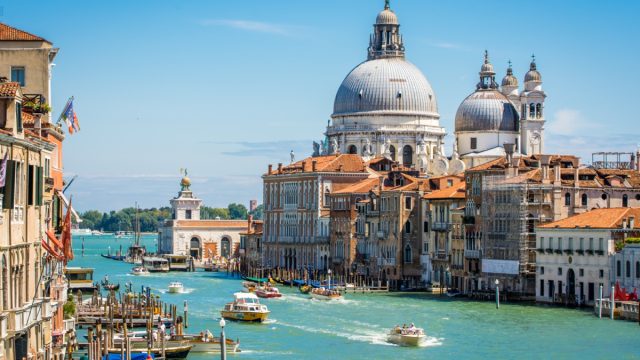
With air travel projected to double over the next 20 years, some of the world’s most beloved and well-traveled places are poised to become ruined by tourists. And while we’re all for traversing the globe and crossing bucket-list destinations off your list, it’s important that we frequent fliers think about the impact we have on fragile environments and local communities. So, in an effort to be more conscientious travelers, we’ve rounded up the world’s most at-risk destinations—and all the stunning under-the-radar places you should go instead.
1
Cozumel, Mexico
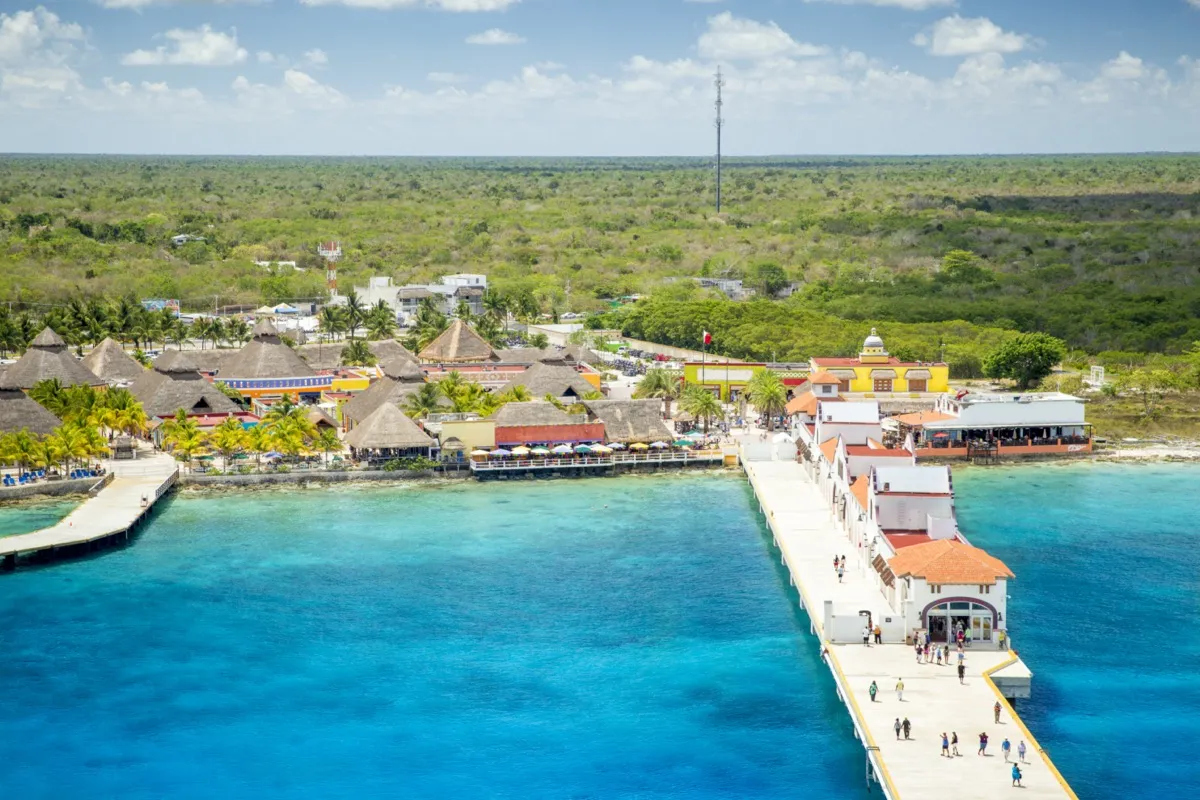
The delicate reefs surrounding Cozumel, an idyllic island off the coast of the Yucutan Peninsula and a frequent stop on Caribbean cruises, are more fragile than ever, due to excess cruise ship activity and the four million-plus tourists that arrive each year. In an effort to protect Cozumel’s fragile aquatic habitat, Mexico’s National Commission of Natural Protected Areas implemented a temporary ban on tourism to several areas of the Cozumel Reef National Park. As an alternative to Cozumel, bring your dive gear to Isla Mujeres, a sliver-size island off the coast of Cancun, where the water is crystal-clear and where you might spot whale sharks and other aquatic creatures.
2
Mount Everest, Nepal
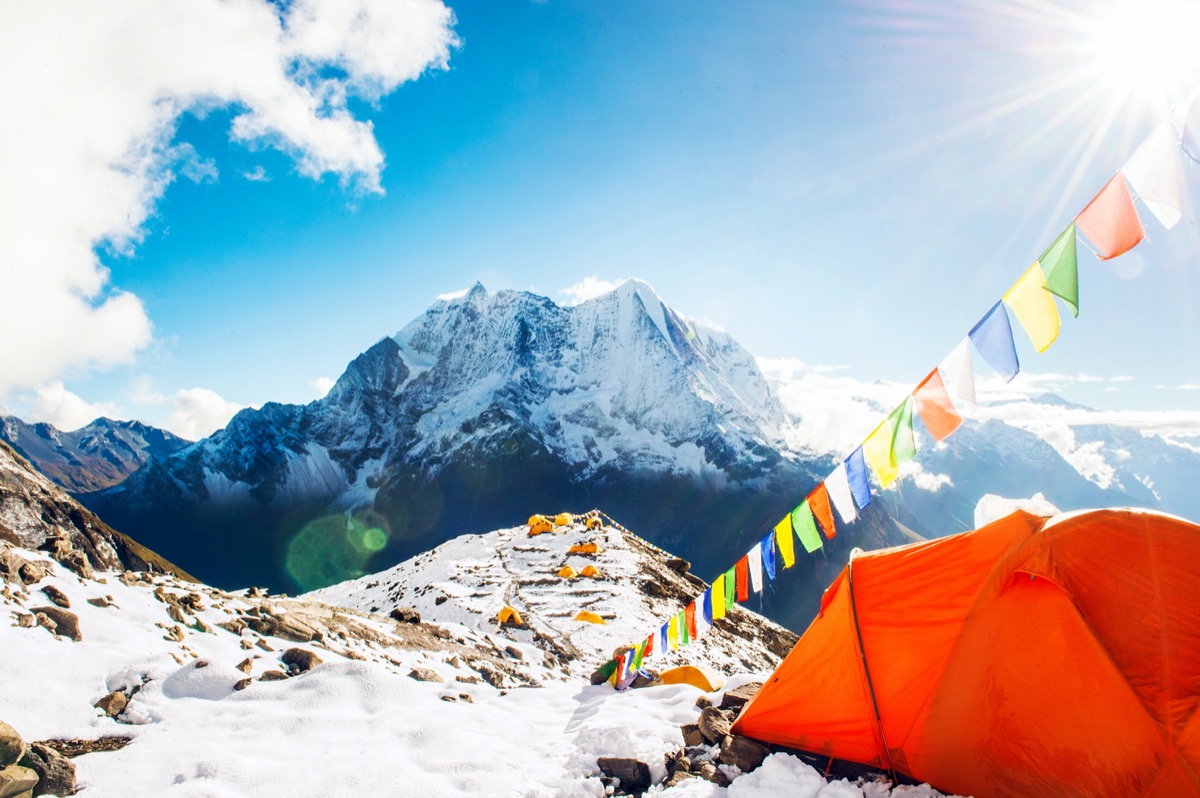
The mighty Mount Everest has never been more popular—and mountaineers and guides are saying that the consequences could be fatal. More and more inexperienced climbers are making the trip, leading to overcrowded pathways even at 29,029 feet. Then there are environmental issues caused by such strong visitation, including the piles of garbage left behind on the trails and the accelerated melting of glaciers. As an alternative adrenaline fix, climb a less trodden but no less challenging peak like Cho Oyu in Tibet.
3
Dubrovnik, Croatia
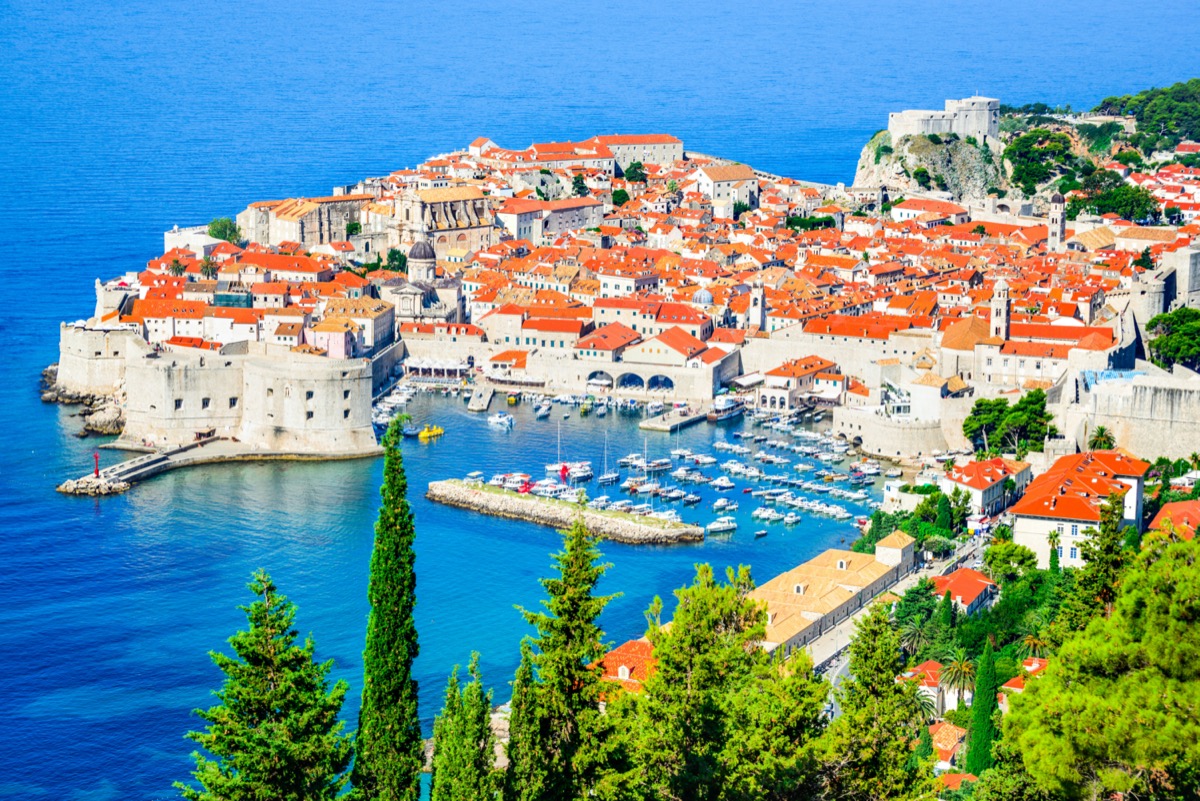
If Game of Thrones helped put the Croatian city on the map, it also contributed to the city’s grave overtourism problem. In the city’s old town, for example, there are approximately 100 souvenir shops, 100 restaurants, and more cash machines than Las Vegas. As a result of the congestion, the city is considering implementing a range of bans, including a temporary one that would prohibit new restaurants from having outdoor seating in the city’s Old Town. We’d recommend supporting other Croatian towns like Cavtat and Zadar instead.
4
Raja Ampat Islands, Indonesia
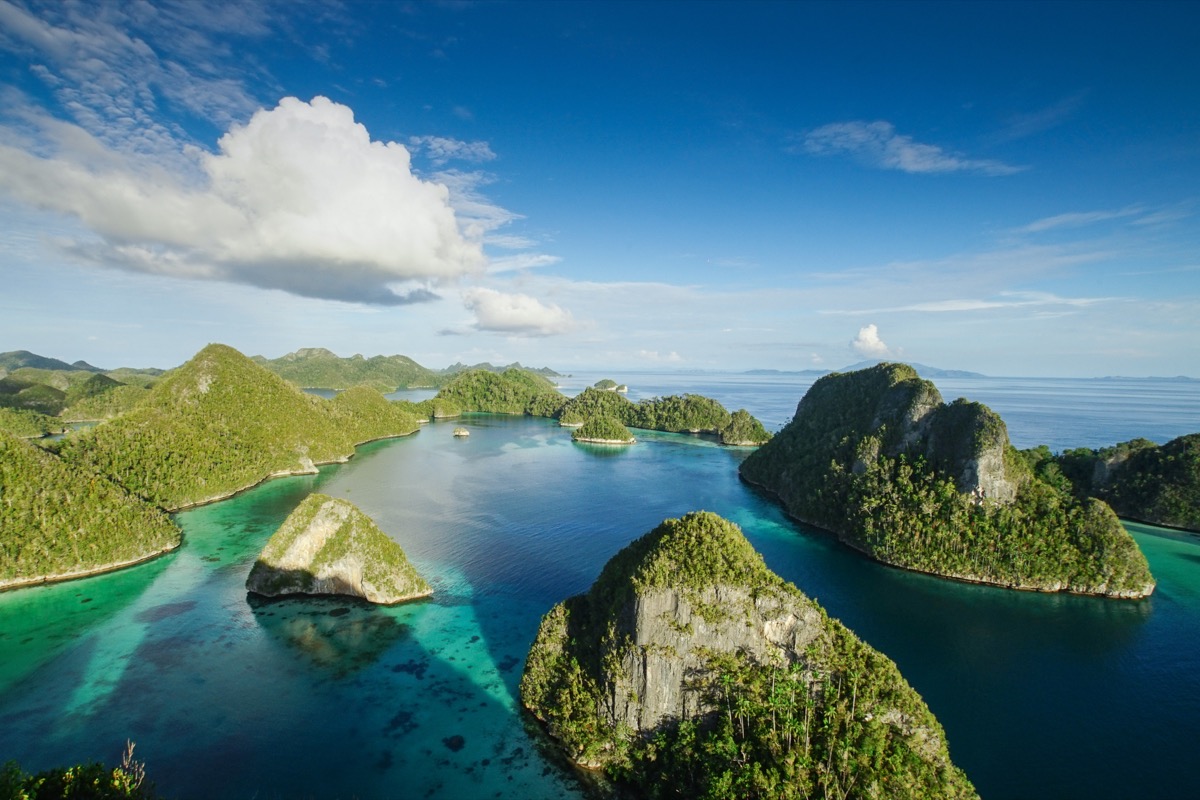
Home to some of the richest biodiversity on earth, the Indonesian archipelago of Raja Ampat comprises more than 1,500 islands. In 2017, one of Raja Ampat’s major coral reefs was irrevocably damaged when a cruise ship crashed into it, imperiling an already-sickly aquatic ecosystem. Scientists are now predicting it will take more than a decade to heal the damaged reef. In the meantime, quell your islomania on the Togean Islands, a constellation of 56 under-the-radar Indonesian islands where you can swim, sunbathe, dive, and snorkel to your heart’s content.
5
Iceland

With its otherworldly landscapes and road trip-friendly sights, Iceland is high on many travelers’ lists. In 2018 alone, more than 2.3 million people made the trip; compare that to the 350,000 full-time residents on the island, and it’s clear why the travel industry has voiced concerns over sustainability and environmental preservation. In 2017, the Environmental Agency of Iceland closed one of the country’s biggest tourist attractions, the canyon of Fjaðrárgljúfur, after a massive influx of tourists. In an interview with CNN, Hannes Sasi Palsson, the owner of an Iceland tourism company said, “That part of the country simply can’t cope with all those stomping feet.” To get your fix of surreal landscapes, consider visiting a U.S. national park like Bryce Canyon instead.
6
Pig Beach, the Bahamas
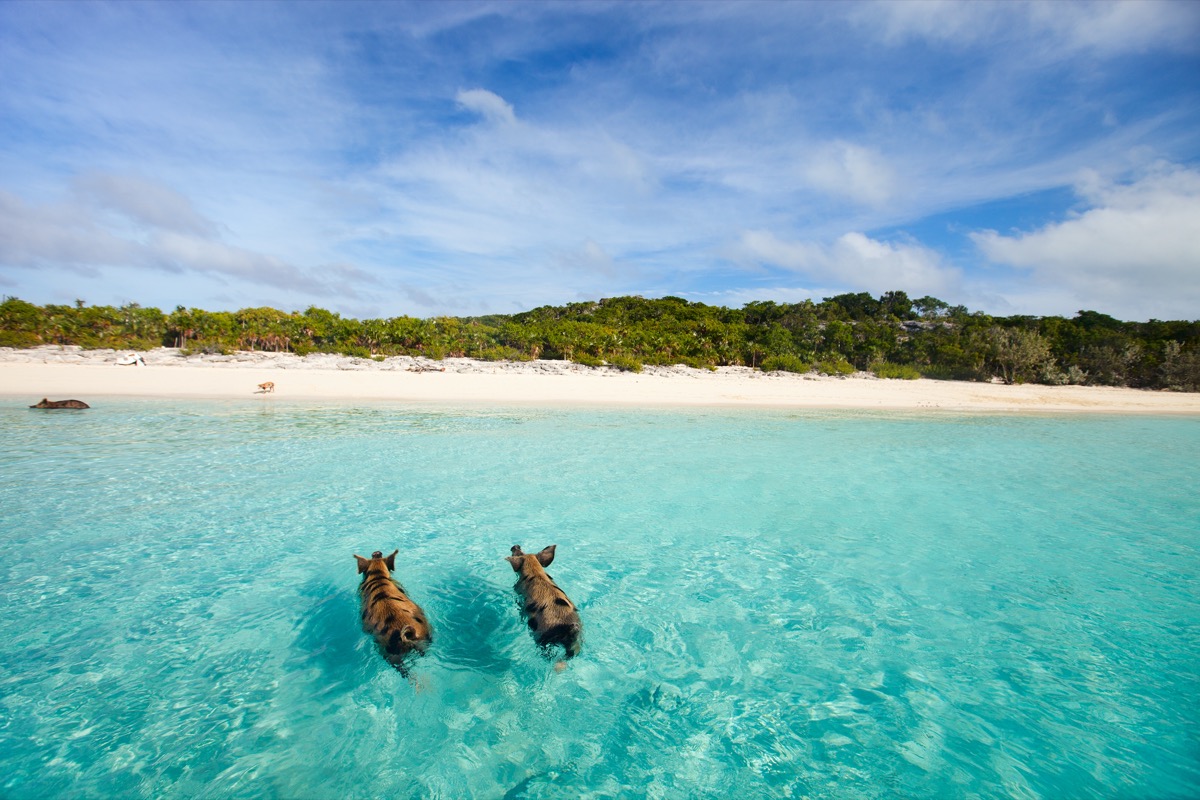
The novelty of swimming with pigs draws thousands of tourists per year to Big Major Cay, an uninhabited island in Exuma, the Bahamas. Sadly, the population of the feral pigs has significantly dwindled due to tourist misbehavior. In 2017, seven of the creatures died after being fed alcohol by tourists. Now, the number of the animals on the island hovers around 15. As an alternative itinerary, head to Nassau and check into the Grand Hyatt Baha Mar, an oceanfront resort with an on-site flamingo sanctuary.
7
Angkor Wat, Cambodia
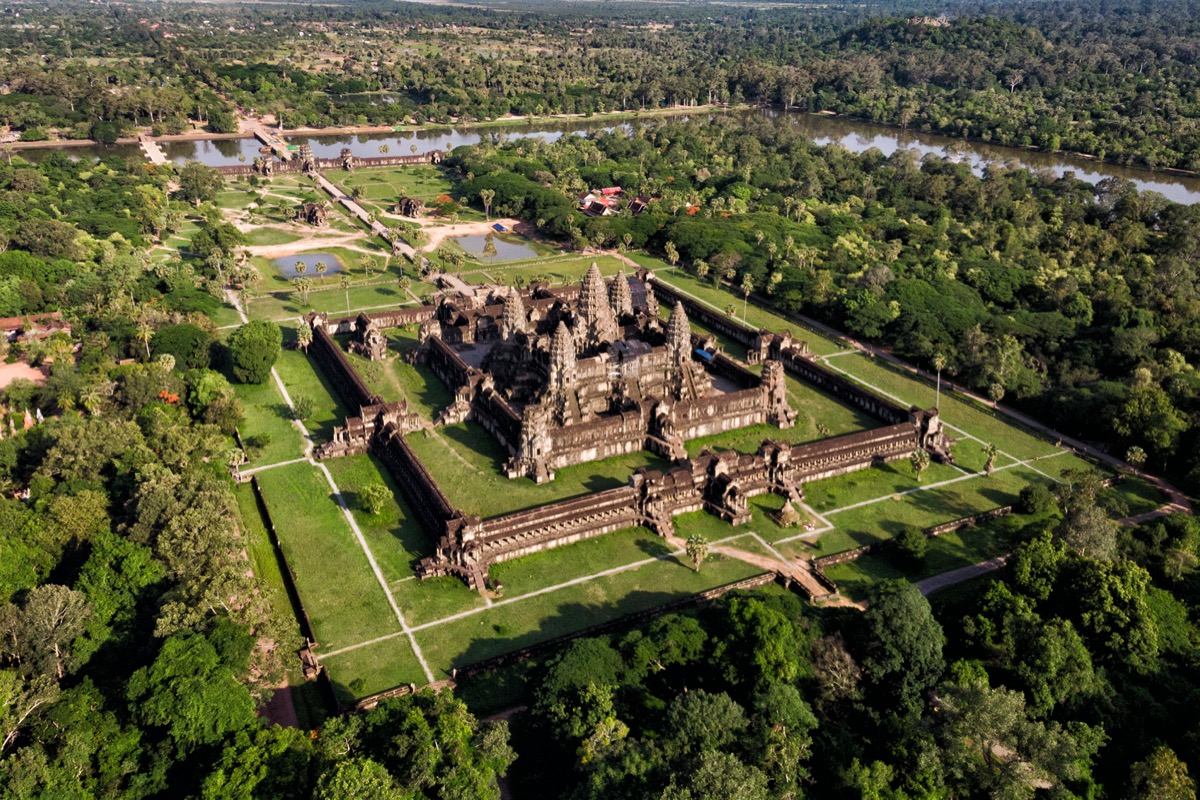
In 1992, UNESCO officials put Angkor Archaeological Park in Siem Reap on a list of endangered sites, citing destruction caused by illegal excavation and pillaging. After deeming the site “reasonably secure” in 2004, Angkor Wat was removed from the danger list— but archeological experts and tour operators claim the ancient temple complex is still at risk. Close to 2.6 million visitors visited the fragile site and temples such as Phnom Bakheng have been compromised because of heavy foot traffic. Instead of Angkor Wat, we recommend visiting the Banteay Chhmar ruins, a collection of eight temples hidden in the Cambodian countryside that date back to the 12th century.
8
The Maldives
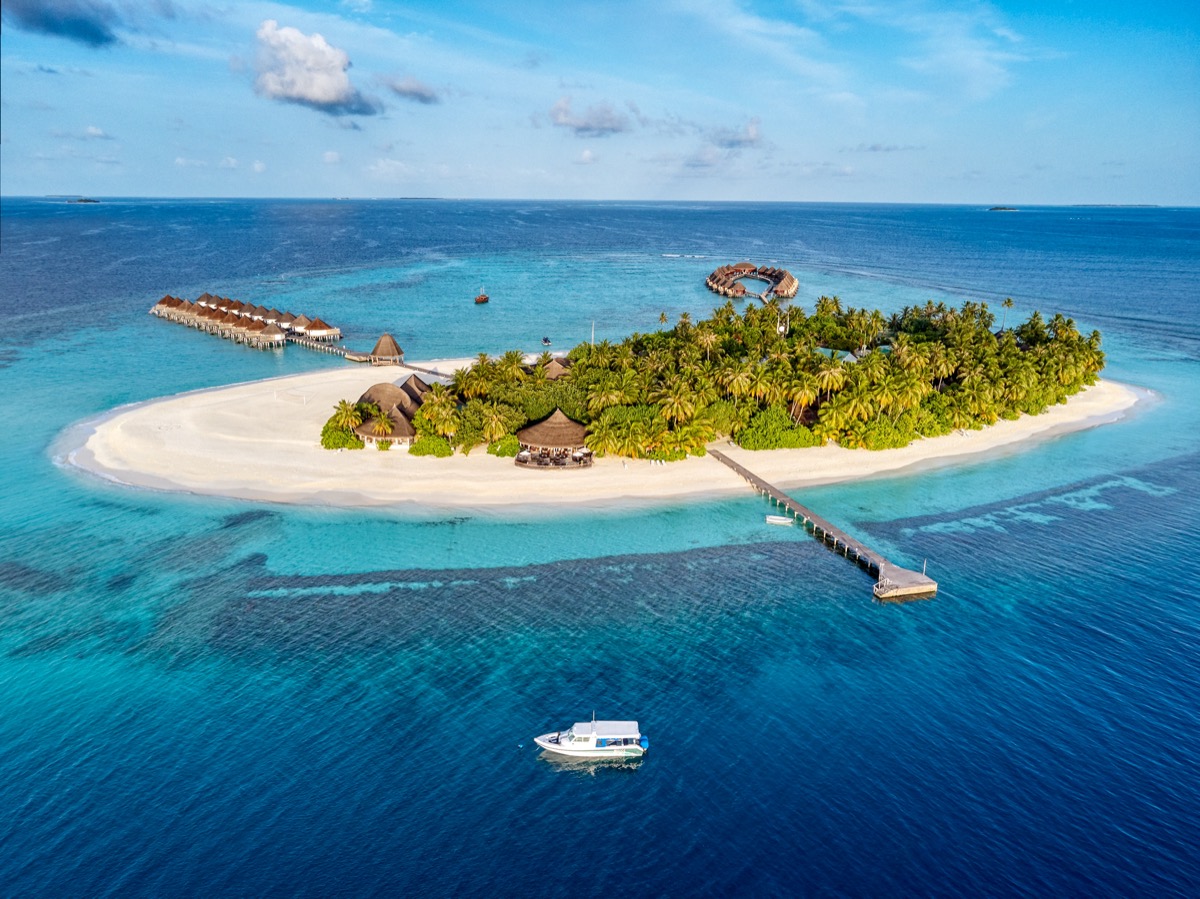
With each passing day it seems like another new resort opens in the Maldives. The torrent of tourists, coupled with rising sea levels and increased construction, is causing irreparable harm to the tropical paradise, including the loss of habitats of endangered species, the disappearance of beaches, and the destruction of coral reefs. In response, some hotels such as Bayan Tree Vabbinfaru are raising awareness through coral rehabilitation programs—but responsible travelers looking for beach bliss should consider the Seychelles or Sri Lanka as alternative options.
9
Machu Picchu, Peru
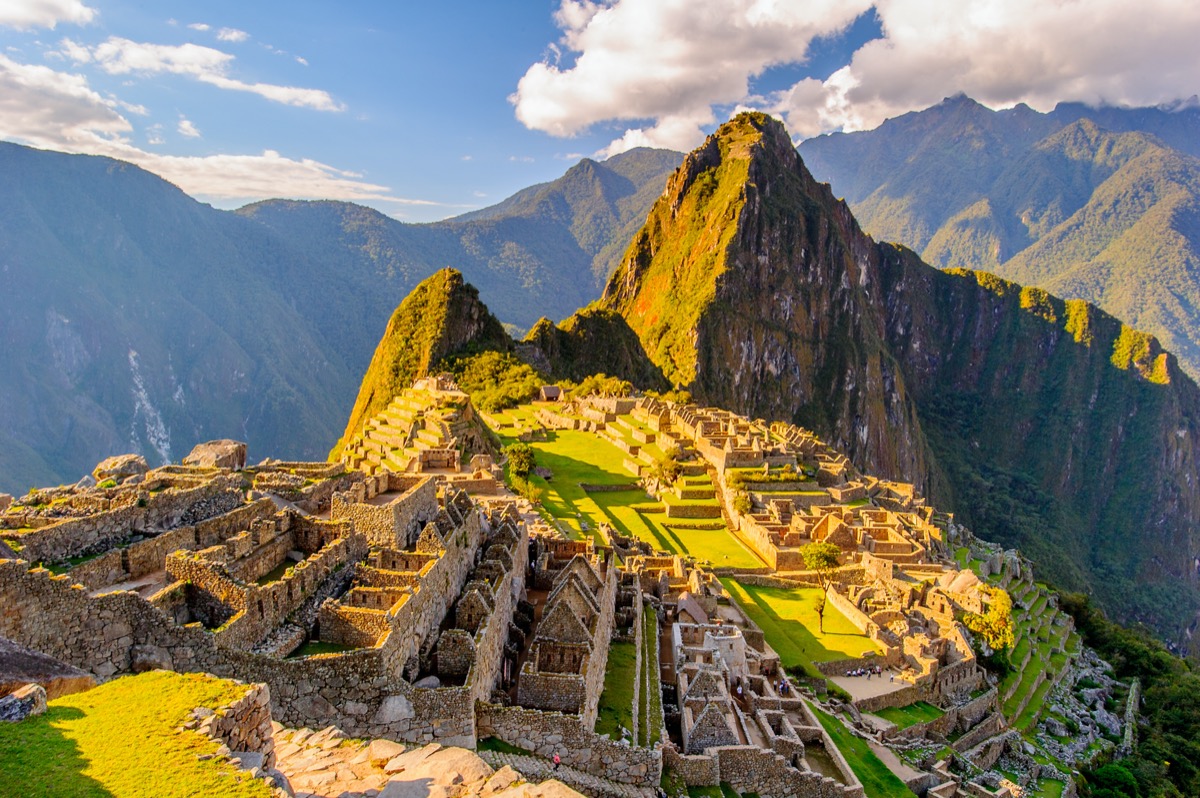
Getting to the Lost City of the Incas, one of the new Seven Wonders of the World, requires a four-day hike or taking a 3.5-hour train from Cusco to Aguas Calientes. Despite the difficulty of reaching the Citadel, Machu Picchu has been plagued by overtourism, drawing more than one million tourists annually. As a result, some of the sacred temples have even been damaged, forcing the government to introduce measures such as timed entry as a way to control the tourist flow. For travelers wanting to discover ancient ruins in the Sacred Valley, there are an abundance of other options, from Kuélap and Llactapacta to Choquequirao.
10
Venice, Italy
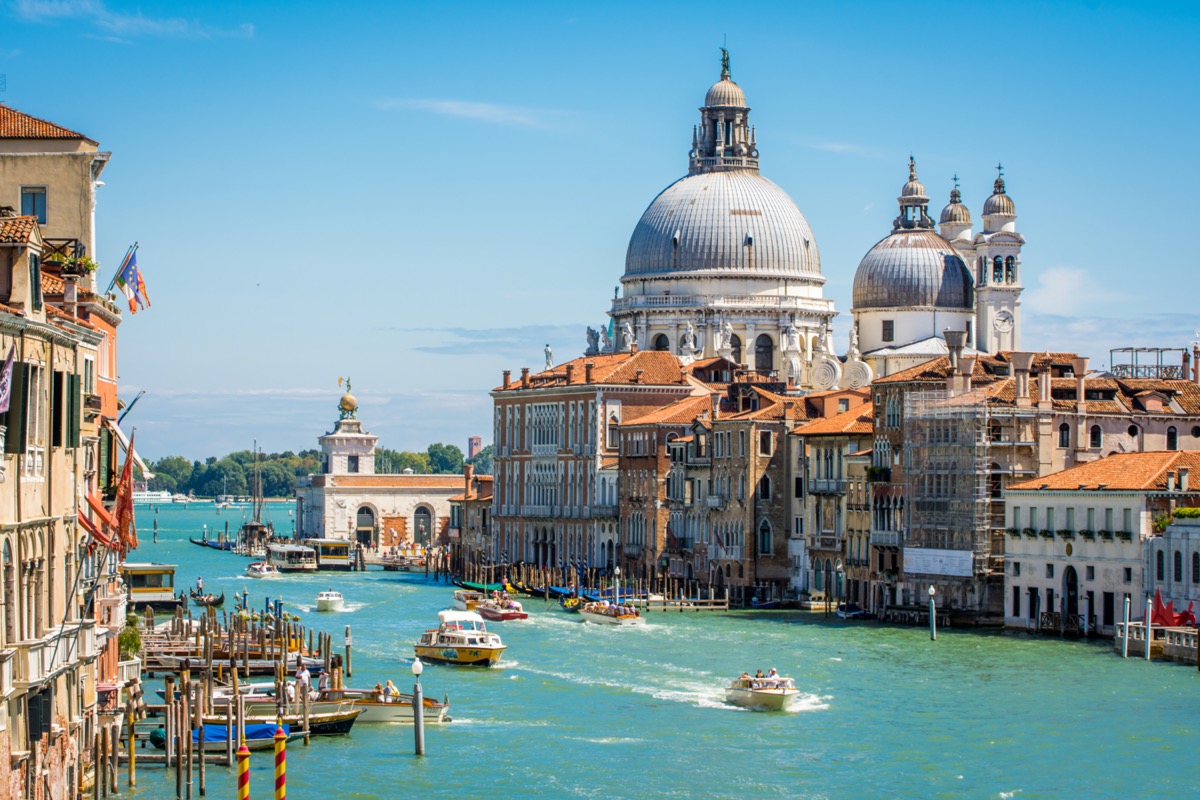
Rising water levels, unprecedented tourist numbers, and an influx of cruise ships are among the factors threatening the infrastructure of Venice, causing historic buildings to crumble and famous attractions, like St. Mark’s Square, to flood. As a way to mitigate the damage, the government has implemented short-stay visitation fees and other restrictions. For all of the culture without any of the crowds, consider other Italian cities like Lecce and Bologna.
11
Boracay, Philippines
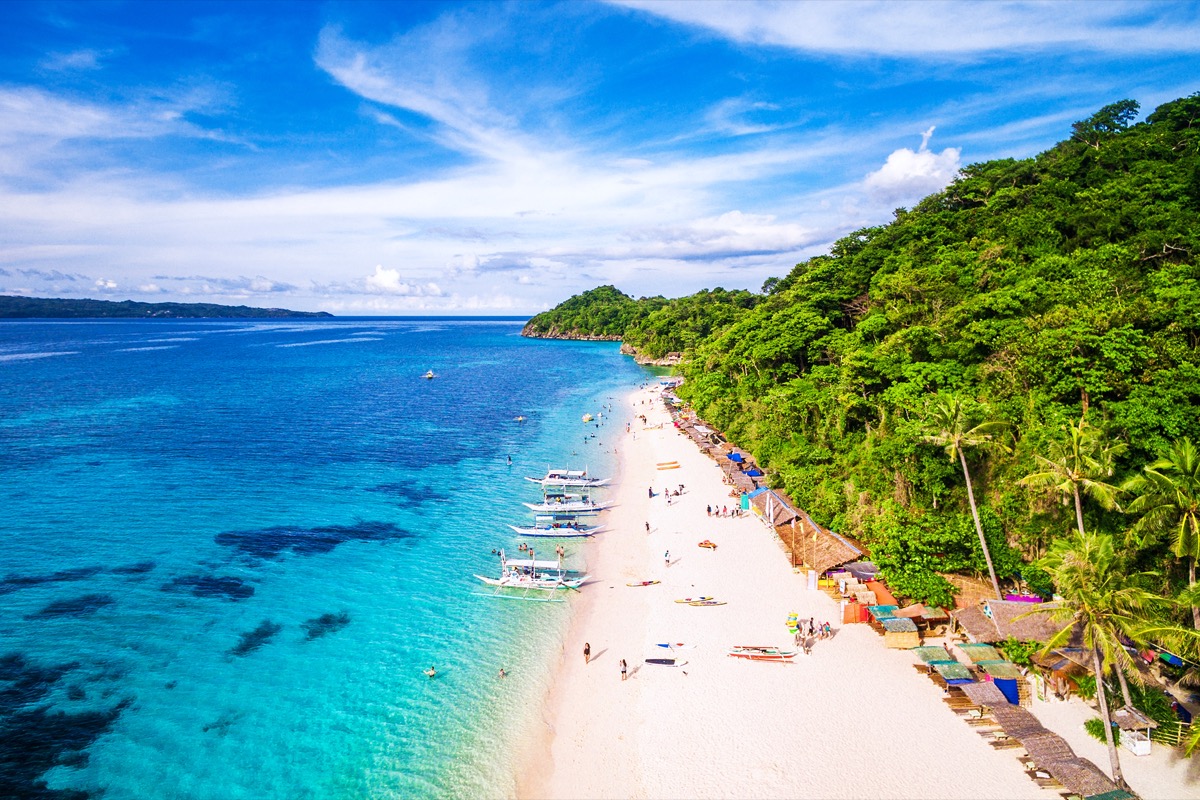
The Philippine island of Boracay was dubbed the best island in the world by Travel + Leisure magazine in 2012. Fast-forward a couple years and Boracay is now a textbook example of the effects of overtourism. The once-crystal clear waters are filled with green algae; the streets are littered with trash; sewage was, until recently, being pumped into the ocean; and more than 70 percent of the coral cover has been destroyed because of unmonitored snorkeling. Give the island time to heal by instead visiting Siargo, a teardrop-shaped Philippine island known for its lush jungles and pristine beaches.
12
Santorini, Greece
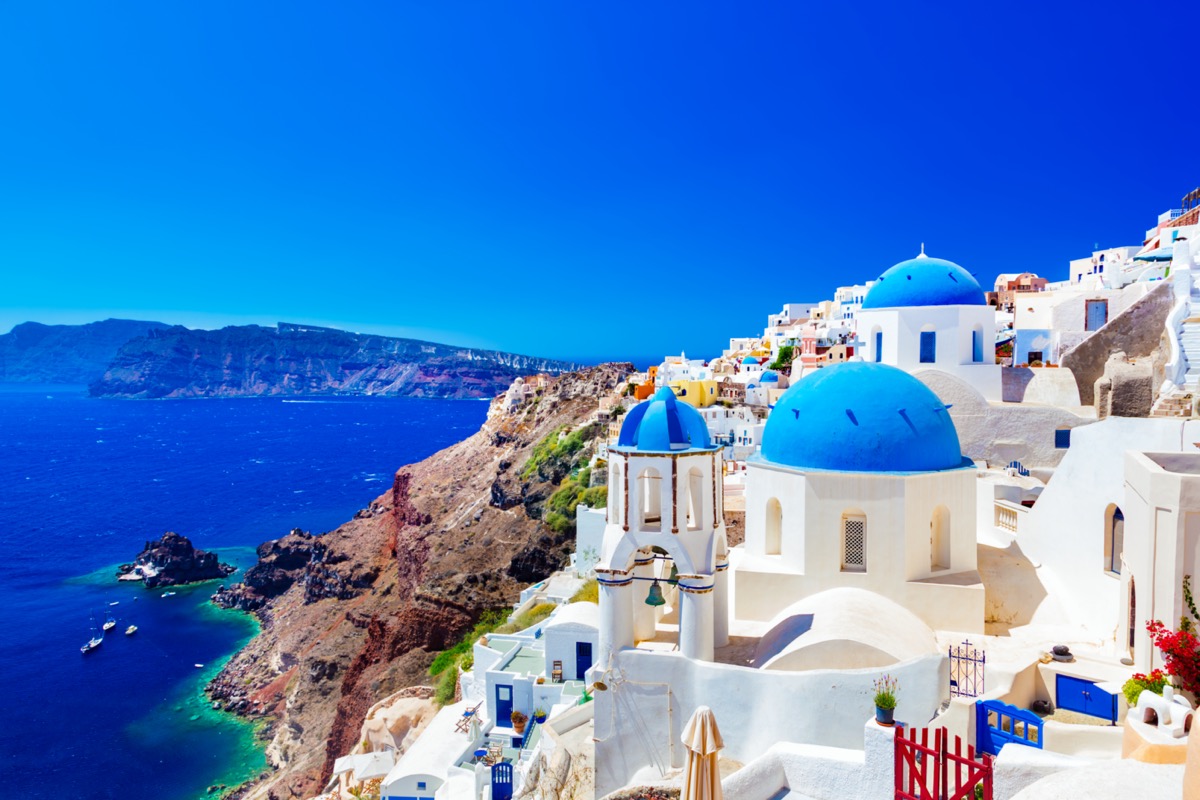
This Greek island, known for its world-famous sunsets and volcanic cliffs, is also known for its tourists. In the popular summer months, Santorini sees more than 10,000 visitors per day. Those numbers have put significant strain on the island, from traffic jams and a spike in energy consumption to rising water levels. In an effort to curb the effects of overtourism, the government has limited cruise ship numbers to 8,000 a day. If you’re keen on living out your Sisterhood of the Traveling Pants fantasies, consider the lesser-visited Greek islands of Milos and Koufonisia.
13
Bali
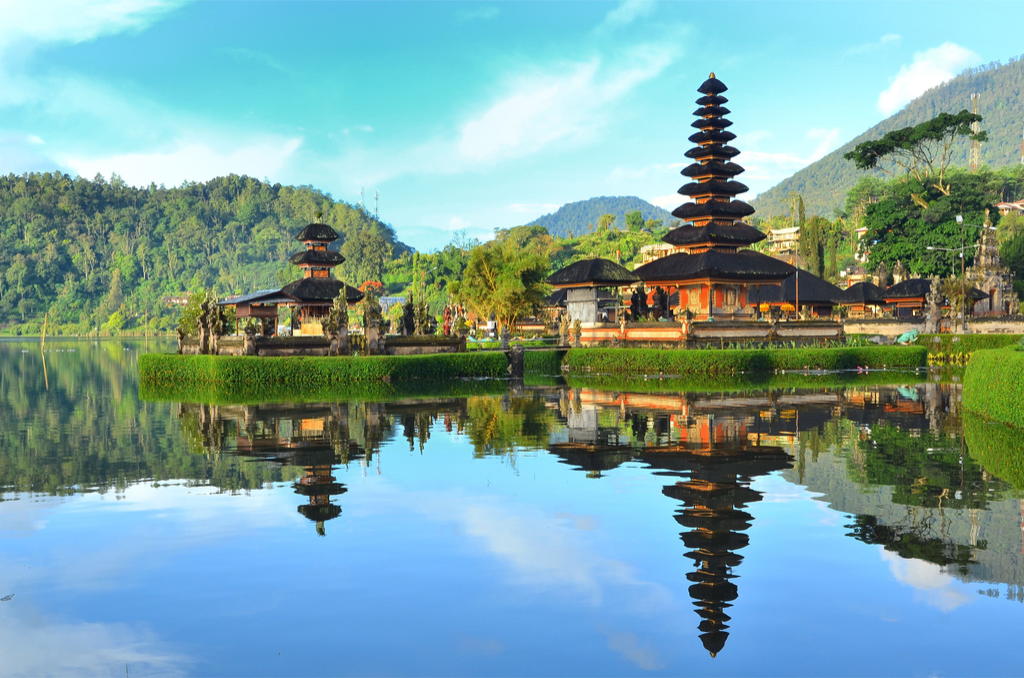
Water shortages, plastic-filled beaches, and overall congestion are new realities of life on Bali, where tourism has taken a sharp increase following the island’s starring role in Elizabeth Gilbert’s 2006 travel memoir Eat Pray Love. Disrespectful behavior is also, sadly, an issue: tourists have posed inside sacred temples wearing bikinis. Do your part to bring the island back to its former self by choosing another Balinese island—say, the nearby paradise of Lombok—for your vacation plans.
14
Barcelona, Spain
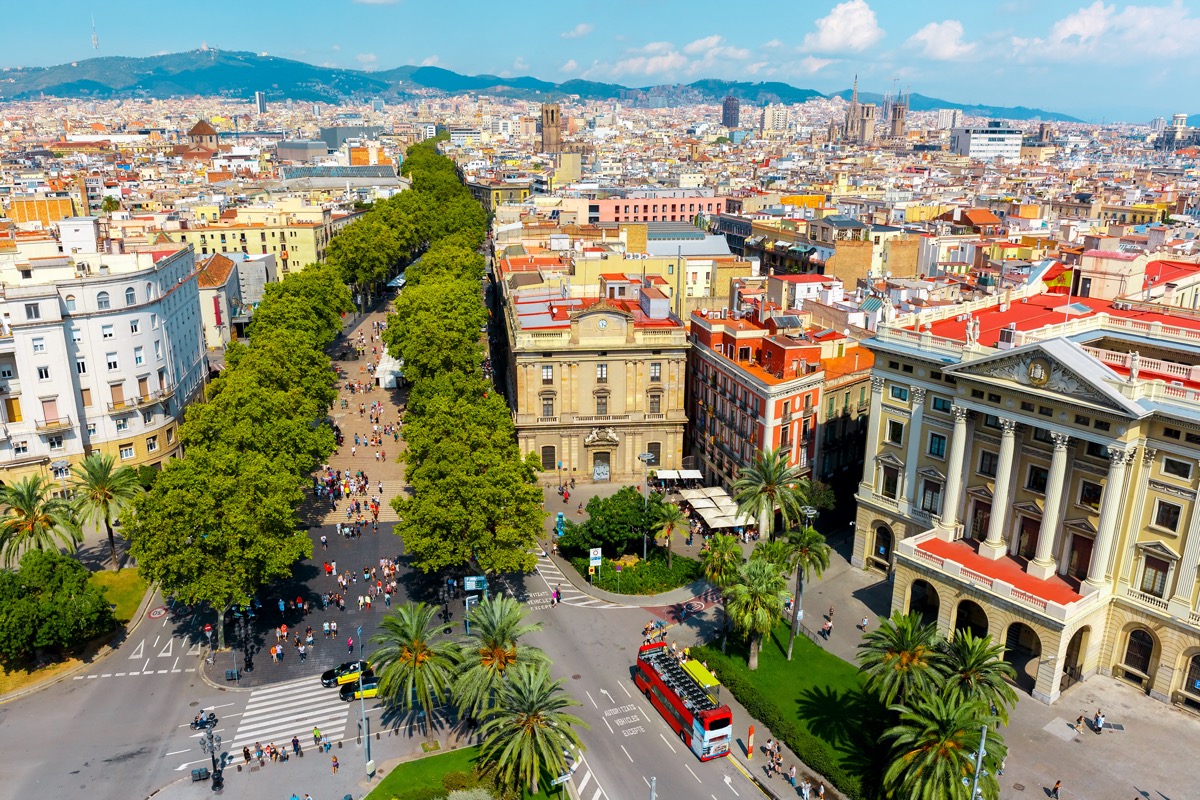
In Barcelona, locals are taking to the streets to decry the effects of overtourism on their city, which include lack of affordable housing, air pollution, and street congestion and noise. Barcelona’s mayor has taken a stand, restricting the number of cruise ships that are allowed to dock in the city and stalling the expansion of the airport. Other alternatives to busy Barcelona include San Sebastian and Cádiz, both of which are on the sea and boast a wealth of cultural attractions.
15
Maya Bay, Thailand
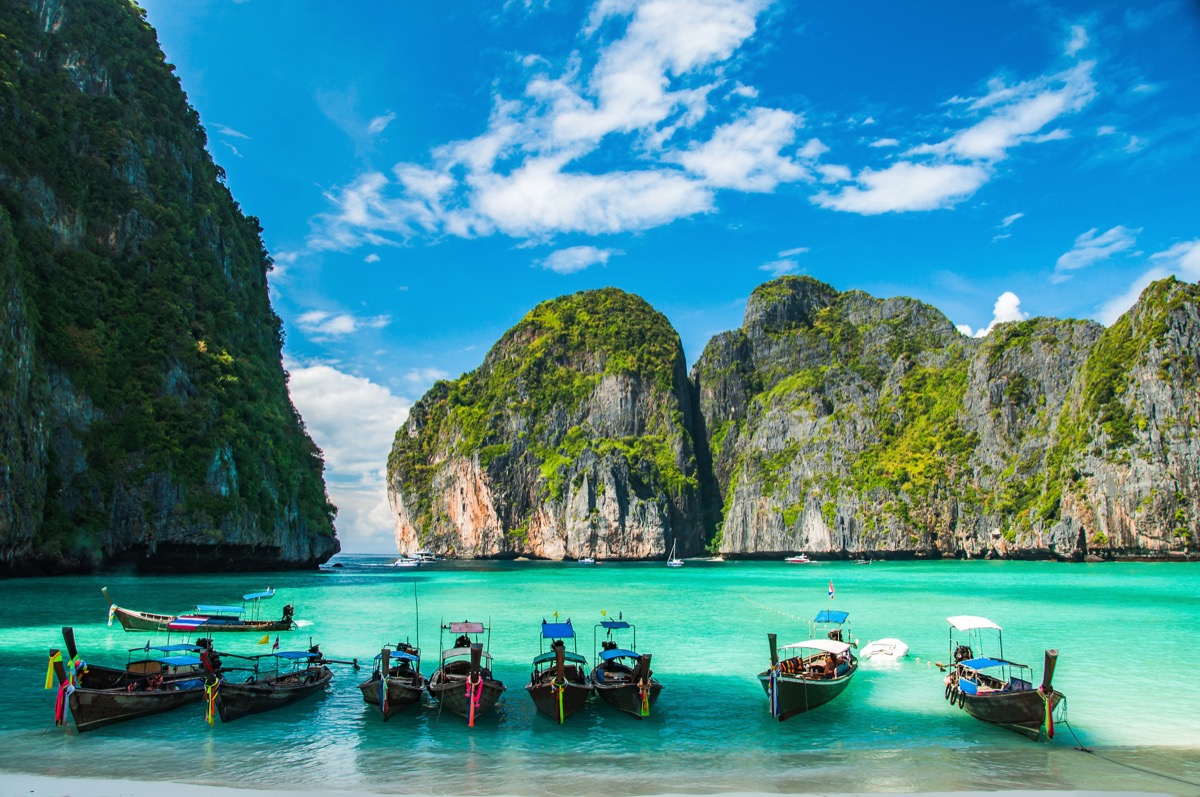
At the height of its popularity, Maya Bay, on the Thai island of Koh Phi Phi Leh Island, saw more than 5,000 visitors per day. (Blame its appearance in the 2000 film The Beach, which depicted the isle’s turquoise waters and limestone cliffs.) Strong visitation resulted in serious environmental damage: most of the island’s coral died as a result. Since then, the Department of National Parks Wildlife and Plant Conservation has closed the bay, and it’s projected to be off limits to visitors until 2021. In the meantime, travelers should set their sights on lesser-known neighboring isles such as Koy Yao Noi.